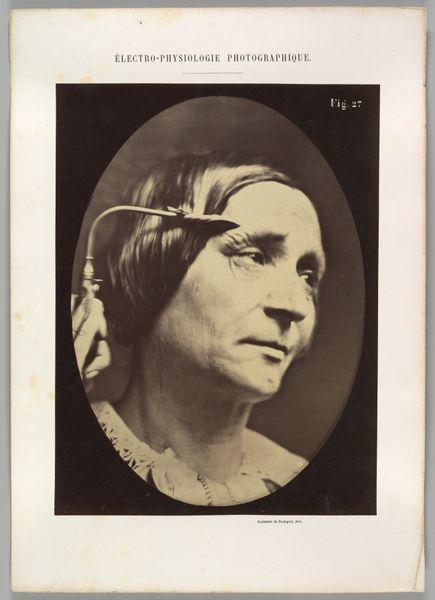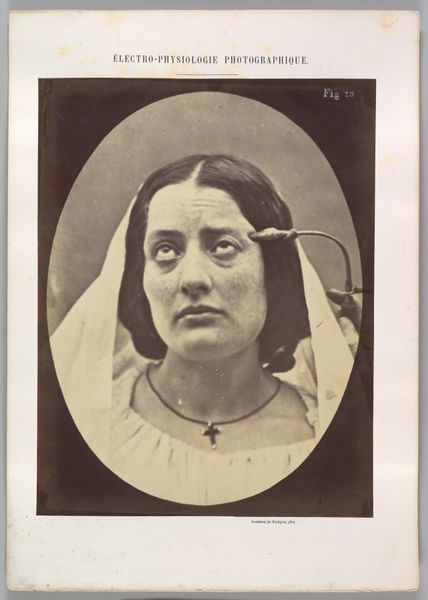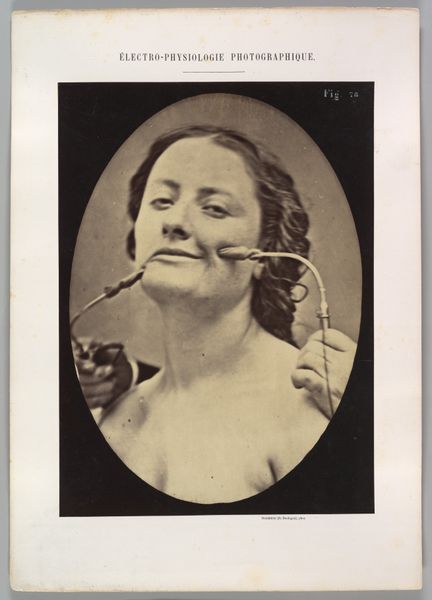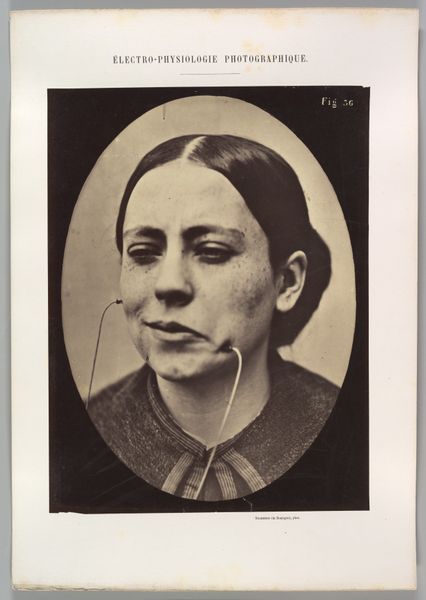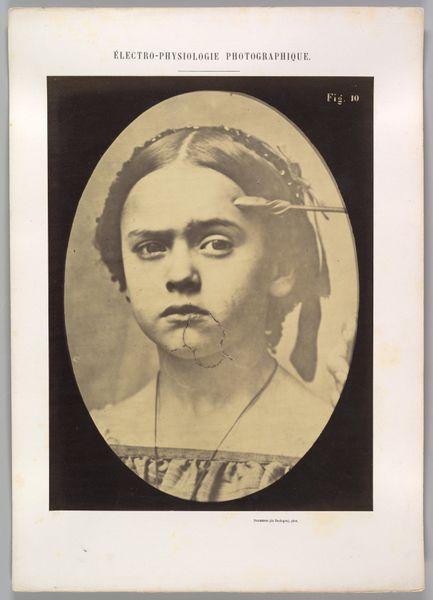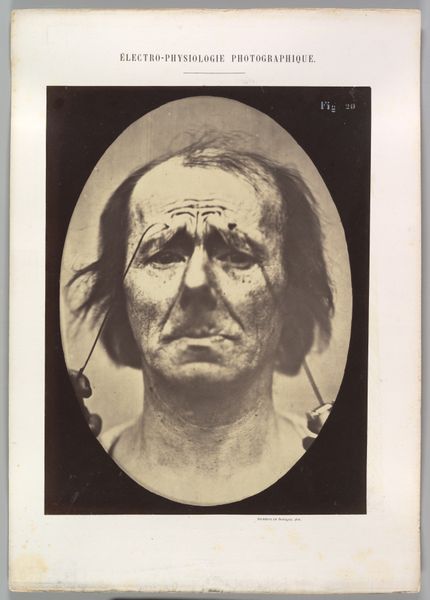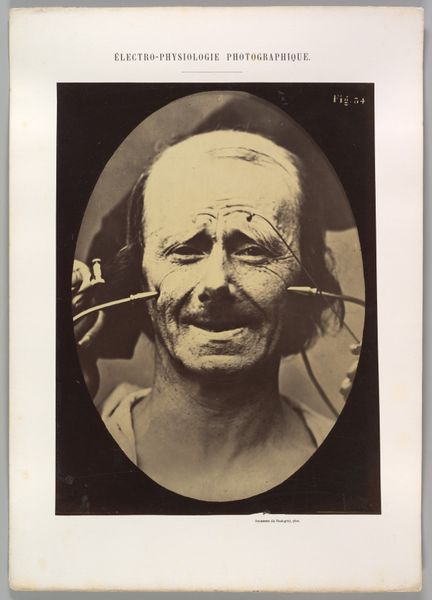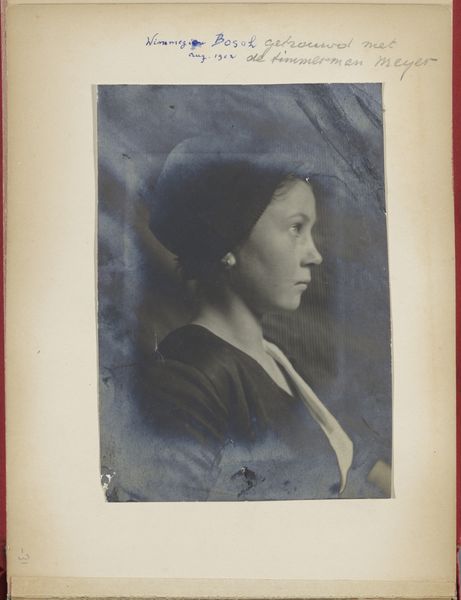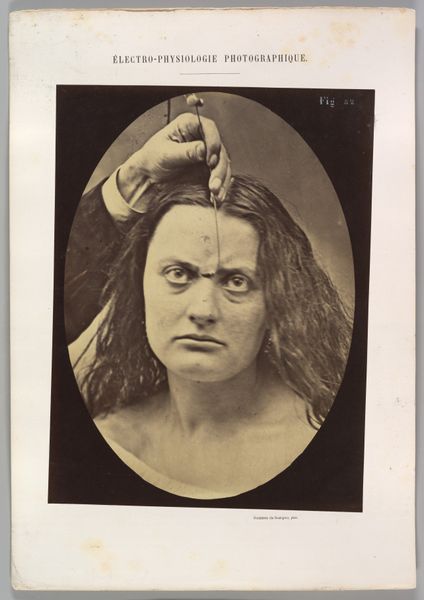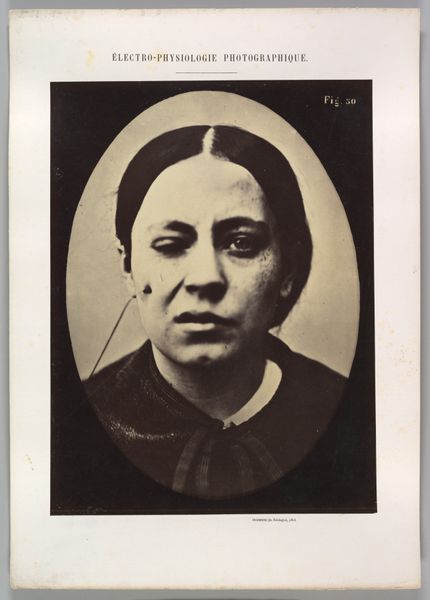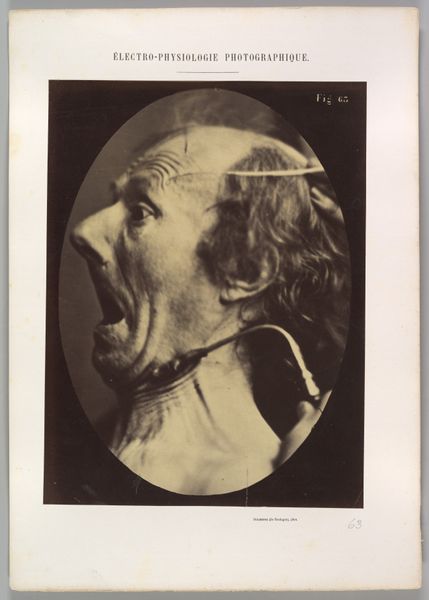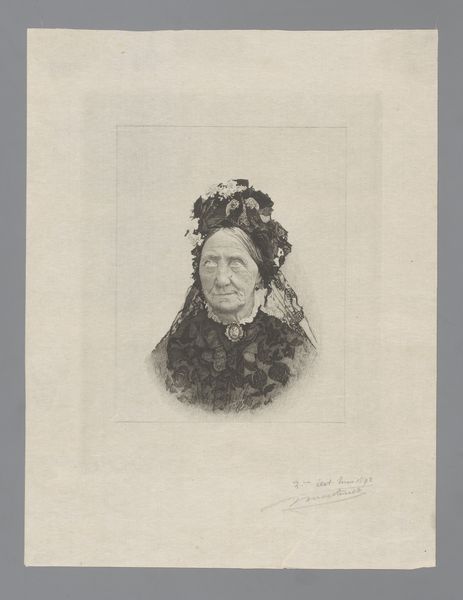
Figure 26: Expression of painful attention and attention, attentive gaze. 1854 - 1856
0:00
0:00
paper, photography, gelatin-silver-print
#
portrait
#
paper
#
photography
#
gelatin-silver-print
#
history-painting
#
academic-art
#
realism
Dimensions: Image (Oval): 28.5 × 20.3 cm (11 1/4 × 8 in.) Sheet: 29.7 × 22.5 cm (11 11/16 × 8 7/8 in.) Mount: 40.3 × 28 cm (15 7/8 × 11 in.)
Copyright: Public Domain
Curator: Looking at this gelatin-silver print, there’s an almost immediate feeling of scientific observation. A bit clinical. Editor: Indeed. This work, “Figure 26: Expression of painful attention and attention, attentive gaze,” was created by Guillaume Benjamin Amand Duchenne between 1854 and 1856. Duchenne was very interested in the science of facial expressions. Curator: Yes, it's a portrait that reduces a face to what appears like raw, almost diagrammatic emotion. There's the implement placed above her brow—as if guiding her expression—but there's so much implied. What symbols emerge for you? Editor: Well, the presence of an object, a probe of some kind pressing above her brow suggests a forceful external control. There’s a discomfort there. This wasn’t just about documenting but eliciting. The setting too; the lighting accentuates every wrinkle, highlighting the toll of, well, *attention*. In some ways it shows us the pain of what it takes to exist and endure—a truly intersectional narrative of gender, age, and visibility. Curator: But it's a controlled study, designed to unveil something universal through this individual, right? Pain is perhaps the ultimate signifier—crossing cultures and experience—an inherent part of being. The composition with the darkened background makes her expression seem eternal. The lines across the forehead might reflect her intellect. Is this too literal? Editor: "Eternal" might be overstating. Instead I view her more as a proxy; her individual experience under the heavy thumb of male dominated 19th-century science, but her pained look still speaks for those who've been pushed into certain societal moulds. Curator: I understand what you’re saying. Even the gesture, forcing the expression itself, it makes one wonder about the tension between revealing truth and constructing reality. Editor: Precisely. So much art history is shaped by a search for 'truth,' and sometimes it is necessary to push beyond the established canons to question if it really served *all* individuals and histories equally. Curator: Agreed. We've looked through both historical and immediate lenses, considering both intent and perception. I'll take a look with renewed consideration now.
Comments
No comments
Be the first to comment and join the conversation on the ultimate creative platform.
